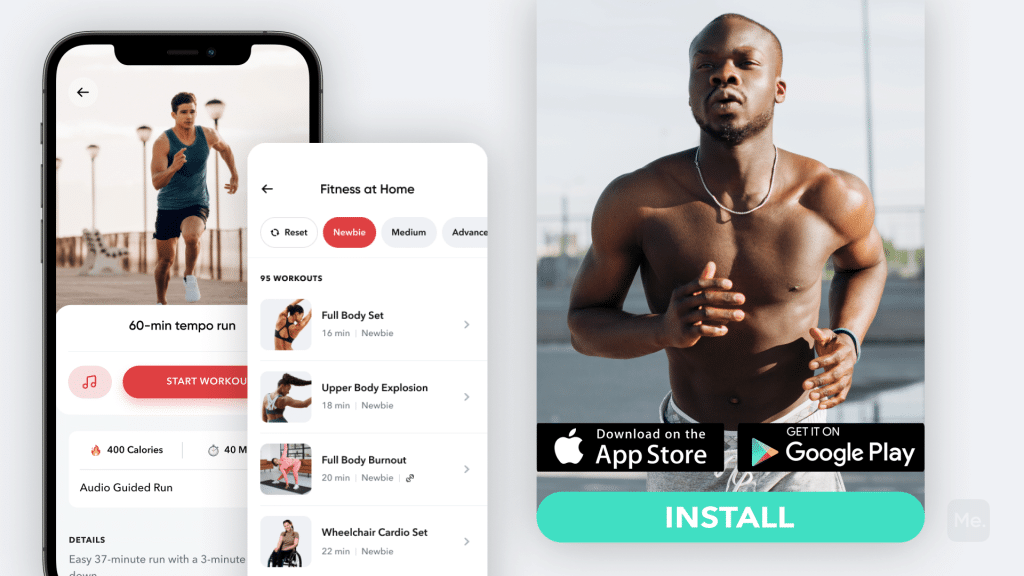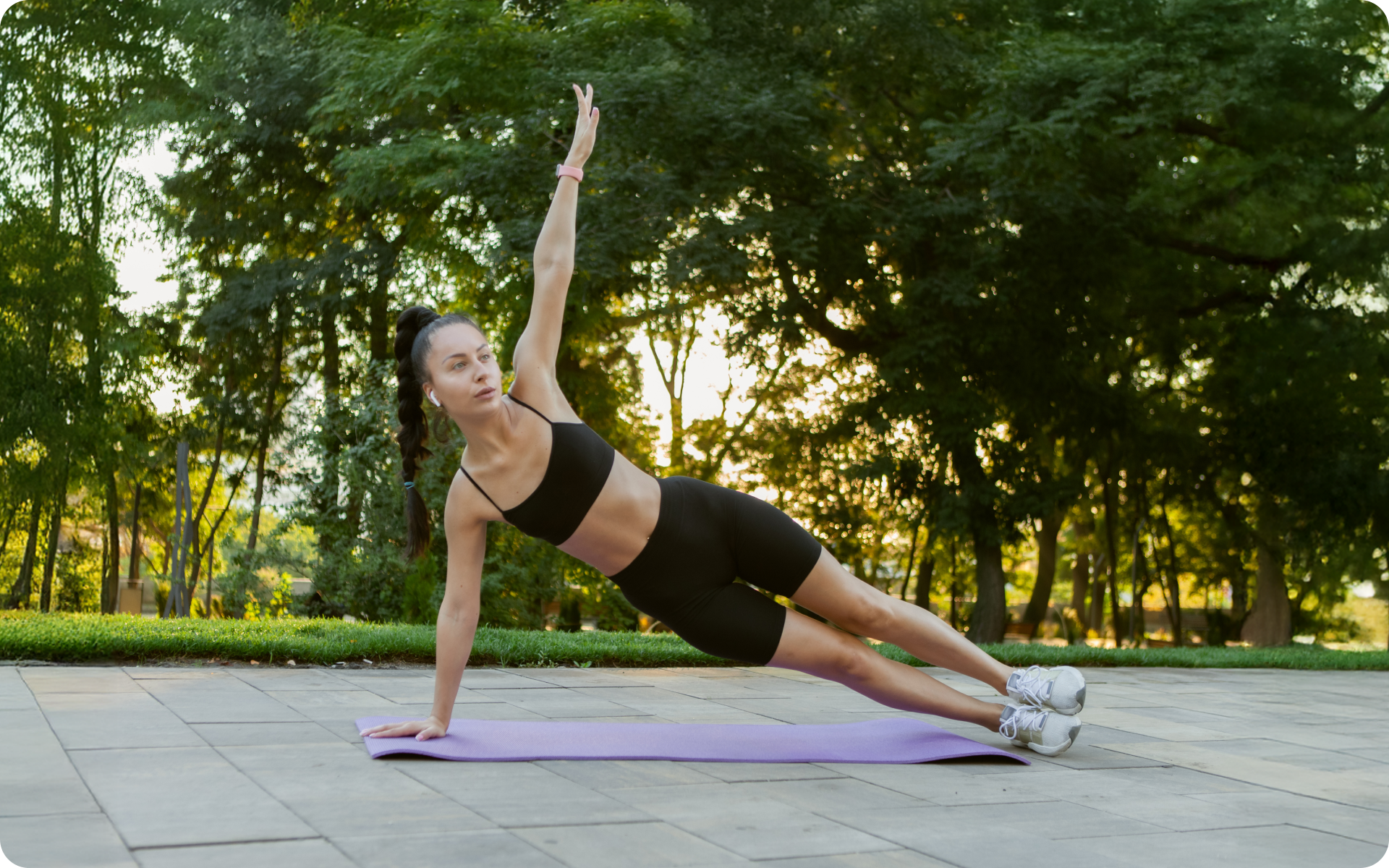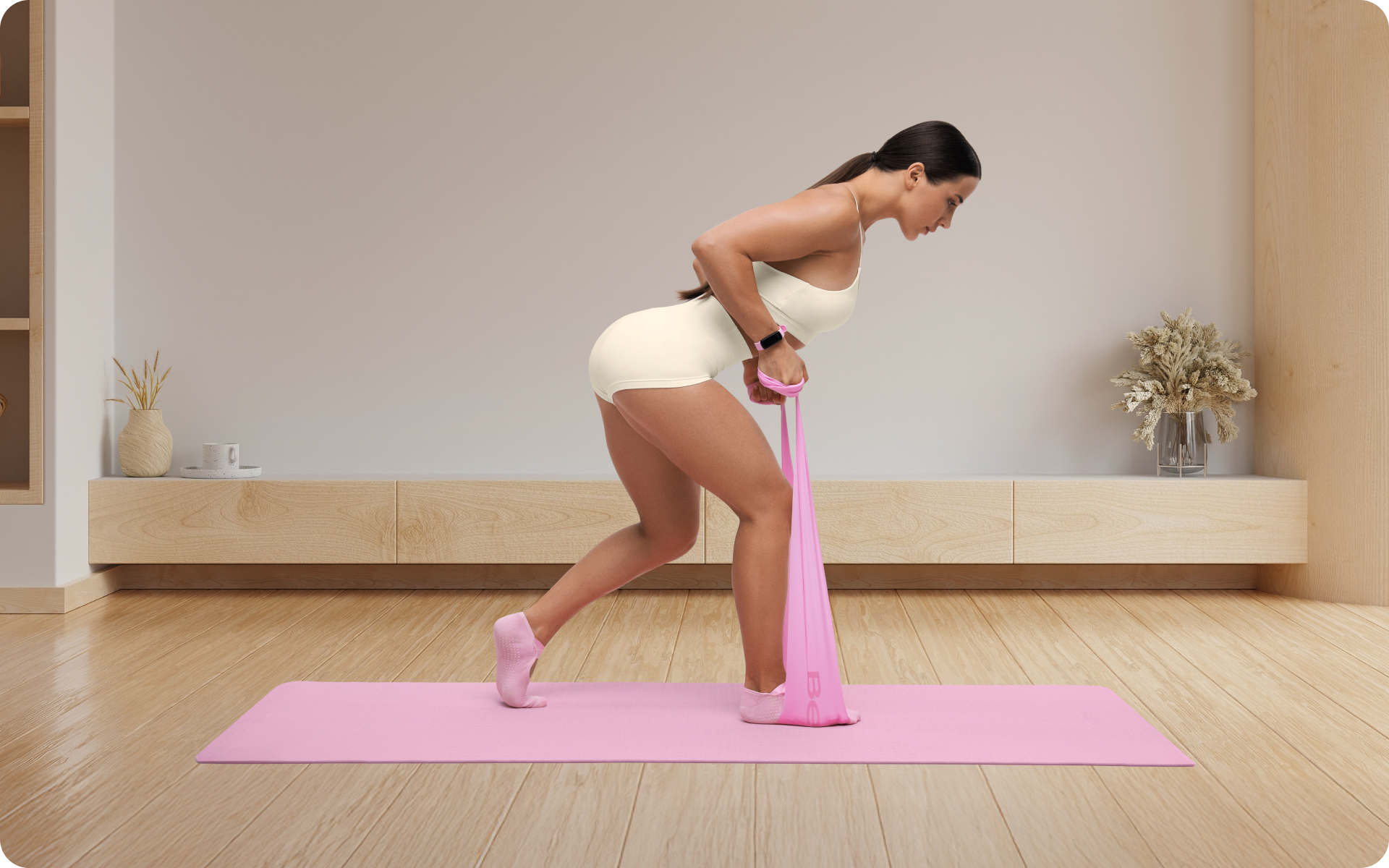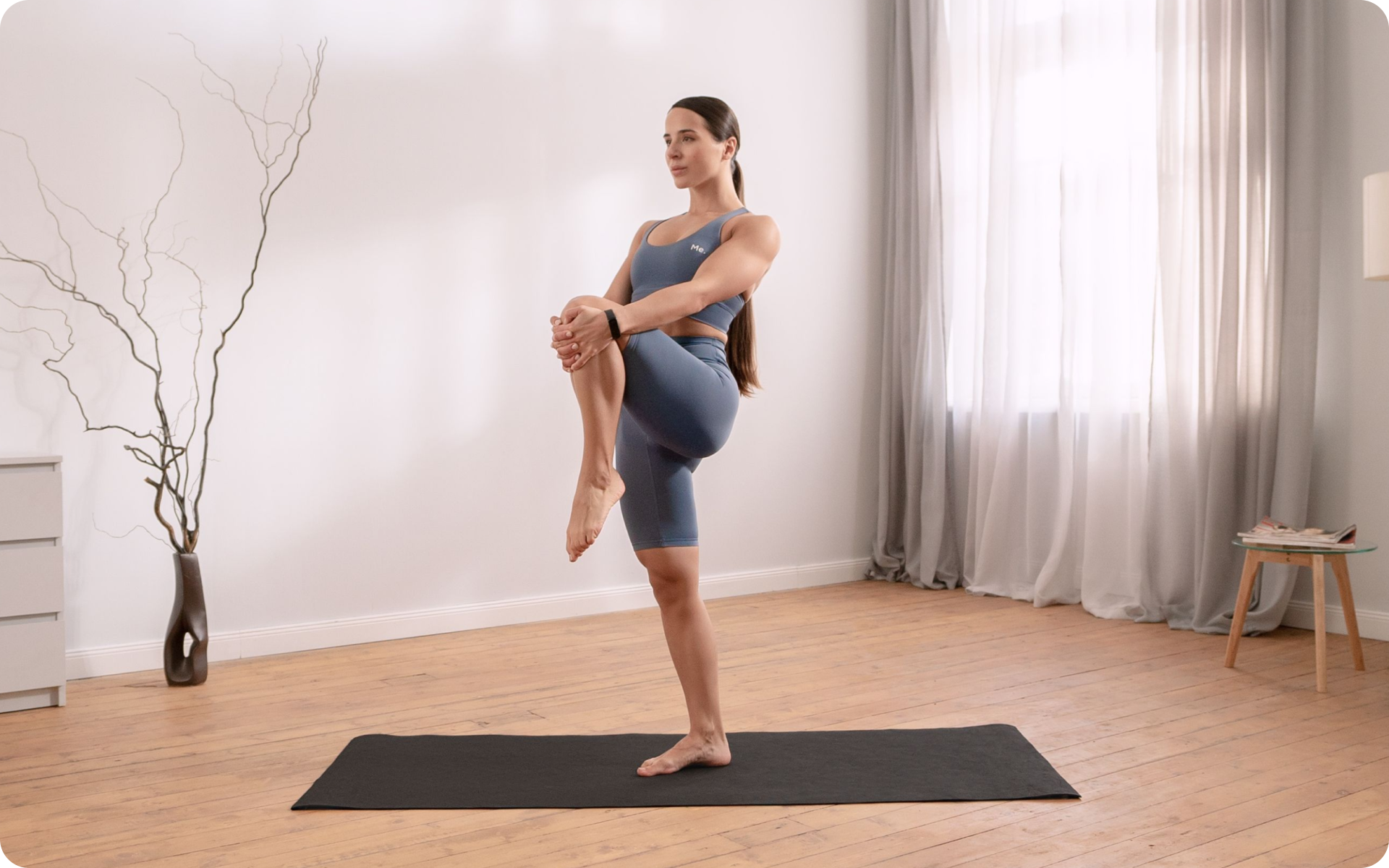Every runner knows that the key to succeeding in a race is training. You need to prepare your body and mind for success by following a pre-race plan designed specifically for you.
Many people don’t realize just how much work goes into preparing for a half marathon, but it’s necessary if you want to be successful on race day. There are many aspects of your life that will be affected from your training, this includes your job, social life, and family.
The first step to a successful race is setting a goal that you know you can achieve, even with all the training involved. The second step is researching if this goal is realistic, based on the time you have to train.
Ready to start your half marathon training? We’ll take an in-depth look at what makes up a strong training plan and what you can expect when getting started with yours.
Sample Half Marathon Training Plan For Beginners To Intermediate Runners
- Monday: Rest day
- Tuesday: 30-minute run
- Wednesday: 25-minute run
- Thursday: Cross training
- Friday: Rest day
- Saturday: 3-mile run
- Sunday: Easy Walk
Notes for this training plan:
- You must have at least 2 rest days per week.
- Cross-training activities include anything that focuses on strengthening muscles.
- Saturday runs should vary in length as you get closer to race day, start with 3 miles, go all the way to 10 or more. You can run more or less depending on how your body feels that week.
- Sunday walks are an opportunity for active recovery-keep it simple and relaxing, preferably outdoors.
Read More: 10K Training Schedules: The Dos And Don’ts Of Getting In Shape For A Marathon
Meal Plan For Half Marathon Training
Fueling your training with the right foods increases your endurance so you can run at a good pace for longer (5). Here’s a sample meal plan for half-marathon training:
Breakfast Meals
- Overnight oatmeal with raisins and almonds
- 2 slices whole-wheat toast with peanut butter, banana, and honey
- Fat-free Greek yogurt mixed with 1 tbsp. chopped walnuts and 1 tsp chia seeds
Snack Options
- Tangerine or other whole fruit
- Multi-grain crackers with hummus
- Low-fat chocolate milk (must be reduced fat to 1%)
- Fat-free Greek yogurt topped with blueberries, and chopped walnuts
Lunch Meals
- Whole-wheat pita stuffed with roasted vegetables, low-fat ricotta, tomato sauce and topped with arugula and a drizzle of olive oil
- Any non starchy vegetable on the approved list plus 1/2 cup cooked brown or wild rice
- Any lean protein on the approved list plus any non starchy vegetable on the approved list
Dinner Meals
- 2 ounces roasted chicken breast with 1/4 cup quinoa and sautéed kale
- Any lean protein on the approved list plus any non starchy vegetable on the approved list
How Long Is A Half Marathon?
A half marathon is 13.1 miles long. People run at different paces according to their ability so time taken to complete a half marathon varies. The average run time is about 123 minutes (8). People who are more advanced runners can finish the race faster than that.
BetterMe app is a foolproof way to go from zero to a weight loss hero in a safe and sustainable way! What are you waiting for? Start transforming your body now!
How Long Does It Take To Train For A Half Marathon?
A half marathon training plan can vary in length, depending on how much time you have to train. On average, a person who has no running experience should expect to take 9 weeks to prepare for the race. If you’re already a runner and this is your first half-marathon, it will take around 5-6 weeks of training. People who are more experienced can shave off 2-3 weeks from those estimates.
Why Is A Half Marathon Training Plan Necessary?
There are several benefits associated with following a pre-race training plan:
Improve Endurance
To run for 13.1 miles, you not only need to have endurance for your legs, but also to keep going despite the discomfort you’ll likely feel around halfway. According to research, a high training volume and long endurance runs increase the chance of success and are not associated with increased risk of injury (12).
Running long distances is taxing on your body, specifically because it requires you to have strong endurance. This is why following an organized training program that gradually increases the distance you run over time is beneficial. By increasing your mileage up until race day, you are preparing both your muscles and bones for the challenges they will undergo at half marathon.
Increase Running Speed
Training plans will vary depending on their length and whether there are any speed components involved. However, running plans for all distances will increase your speed around the time of the race by encouraging you to run-walk intervals, where you alternate jogging and walking during your training sessions.
By incorporating both long distance training as well as intervals during which you are challenging yourself to go at a quicker pace, you will be able to keep up with other runners throughout the duration of the entire 13.1 miles of the half marathon.
Avoid Overtraining And Injuries
Running a half marathon is a big feat in and of itself, so why overwork your body more than necessary? To avoid injuries and have the greatest chance of finishing the race, it is important to put in consistent but not excessive amounts of training.
If you don’t follow a schedule, it can be easy to get carried away with more days spent training which could result in more injuries since your muscles might need time to recuperate after each day (6). This also means that you will be able to keep up with your running schedule despite unpredictable factors like bad weather conditions or large fluctuations in schedules at work or school.
Read More: Marathon Training Plan: The Ultimate Guide For Beginners
Mental Strength
There’s something about having a plan that keeps one working towards achieving it, which builds mental strength and determination in individuals who might not otherwise push themselves beyond their limits.
Increased Confidence
Once you have completed an organized training program, you get a boost of confidence because you can see your accomplishment on paper, represented by the number of miles you have accumulated. This gives you a sense of purpose because it gives you something to strive for each day.
Improve Time Efficiency
If you do not follow a training plan, it may be difficult to incorporate your running into your day-to-day life. When you have a long-term goal of completing the race and want to make sure that running is also working towards achieving other aspects of your life, pre-race training plans are perfect because they are designed specifically with busy schedules in mind.
How Do I Choose A Half Marathon Training Plan?
One size does not fit all when it comes to training, so it’s important to find a plan that is tailored specifically for your individual needs and preferences. Some key considerations to make while choosing a training plan include:
Your Current Running Ability
If you’ve been running for a while and have completed 5k and/or 10k races, then chances are that you’ll be able to complete a half marathon with just about any training program.
However, if you’re new to running or haven’t yet reached the distance in your current fitness level, then it’s best to stick with plans that are geared towards beginners or intermediate runners.
Keep in mind that even beginner plans will require you to run at least 3-4 times per week, but these runs should be short (less than 30 min) to allow for proper recovery. There are many training plans so take your time to choose that which matches your fitness level (2).
How Much Time You Have Until The Half-Marathon
If you have just a few months until your half marathon, then it’s best to look for an 8-week plan. However, if you have more than 8 weeks before the race, then you can use one of the longer plans and still be in good shape to cross the finish line in your goal time.
Even if you have 10+ weeks before your event, don’t be discouraged from using a longer plan. Many runners find that these programs increase their endurance and mental strength while they’re running (no matter how slow).
It’s also helpful to keep in mind that recovery is another important aspect of training (10). If you’re following a 16-week plan but it calls for 5 hard runs per week, then chances are you’ll burn out before the half marathon even arrives.
Intense sweat sessions, working weight loss tips, lip-smacking recipes come in one package with the BetterMe app. And all of it is at your fingertips, start transforming your life now!
What Your Goal Time Is
Most plans will have several suggested goal times at the beginning of the program ranging from 1:30 to 3 hours, depending on your previous race times and running ability.
If your primary motivation is simply to finish the race, then choose one of the longer programs or consider signing up for a “fun” run where all participants receive a finisher’s medal regardless of their finishing time. But if you want to achieve a specific time goal, then follow one of the shorter training schedules so that your body can properly adapt to running 13.1 miles on race day.
How Busy Your Schedule Is
If you’re a busy person who works 9-5 Monday through Friday, then you’ll need to choose a training plan that will fit into your daily schedule. Some plans are designed for runners with extremely busy schedules because they call for workouts during the weekdays and long, slow runs on Saturdays and Sundays.
Depending on how often you’re able to run, the type of program can be either beneficial or harmful because it allows you to spread out your training over 4-5 days each week instead of 3-4 consecutive days.
What Happens If You Get Injured While Training?
Runners typically suffer from some type of injury at least once per year. The most common injuries are muscle strains and shin splints, but other common problems include runner’s knee, blisters, and plantar fasciitis (4). In order to avoid these injuries, it is essential that you stick with a training plan that allows your body to adapt to the demands of running 13.1 miles.
If you’re following one of the shorter training plans (6-8 weeks) then you’ll need to take several days off if your legs feel tight or sore after any run. If you’re following one of the longer programs (12+ weeks), then do not take more than 1 day off per week (unless necessary).
Just like with your workouts, make sure you listen to your body when it comes to taking time off. If something doesn’t feel right when you run, then stop immediately and rest for a day or two.
Now, if despite taking all these precautions, you get injured while training, it doesn’t mean you have to quit being active altogether. Cross-training is a great way to continue working towards your goals without straining your injured muscle groups (1).
Here is how cross-training works:
If you are following a 12-week training plan, but get injured after week 3, then continue running 3 times per week and do your cross-training on the other 4 days. Some examples of cross-training exercises include biking, elliptical workouts, swimming, yoga classes, etc.
You should still limit the amount of time you spend doing these alternative activities to about 20-30 minutes at a moderately high-intensity level. For example, if you were supposed to run for 30 minutes, then simply bike for 15 minutes instead.
Just remember that your goal is to stay active throughout the recovery process rather than sitting on the couch feeling sorry for yourself. As long as you listen to your body and cross-train without straining yourself, you should be able to recover quickly and get back to running again before you know it.
What Kind Of Strength Training Should I Do To Get Ready For A Half Marathon?
When you think of a half-marathon training plan, you may not think of strength training as a necessary component. However, strengthening muscles contributes towards your overall fitness, improves endurance, and reduces the risk of injury (9).
The kind of strength training you choose can be tailored to your current level of fitness. If you are new to exercise, it is best to start slow with guidance from a physical trainer.
When training for a half marathon, focus on exercises that work for strengthening all major muscle groups. In order to minimize injury, spend at least one day per week in the gym concentrating on resistance exercises that target large muscle groups.
Experts recommend aiming for eight slow, controlled repetitions of each exercise with 60-90 seconds of recovery between sets. Continue to slowly build up the number of exercises you perform and repetitions over time so that you can work all large muscle groups without overtaxing any one area or increasing your risk of injury.
Here is a list of strength training exercises that you may do during a half marathon training regimen, and the muscles they work:
- Bench Press – Chest, Triceps, Shoulders
- Chest Press – Chest, Triceps, Shoulders
- Incline Bench Press – Upper chest, Triceps
- Incline Flyes – Upper chest
- Reverse Flyes – Back and shoulders
- Military Press – Shoulder
- Dumbbell Shrugs – Traps or upper back if done with shoulder presses
- Shoulder press Machine- Shoulder
- Lat Pulldowns to Front- Mid Back
- Bent Over Row – Middle back & Arms if using barbells for this exercise.
Which Gear Should You Have While Training For And Running A Half-Marathon?
Training, of course, comes first. Without that crucial step, you won’t be ready to run 13.1 miles all at once. However, an often-overlooked part of the training process is acquiring and wearing the proper gear for your half-marathon activities. Here are some pointers:
The Right Shoes
Don’t underestimate the importance of proper footwear as they are important when it comes to sport (7). You need to have supportive, well-fitting shoes that are comfortable enough to wear for long periods of time. Something with good arch support will help prevent pain in your feet and legs.
Also, avoid anything too bulky or heavy, as they’ll just slow you down. During your training process, it’s a good idea to visit a local running store where staff members can take measurements and help recommend the best shoe options for you based on previous purchases and what you tell them about how you run (or intend to).
If this isn’t an option, be sure to read reviews online from other runners or from the manufacturer to get a general idea of how well the shoe performs. Shoes may seem expensive, but they can last for years if properly cared for, so it’s an investment well worth making.
Accessories And Dressing
In addition to shoes, consider getting a sports watch or tracker with GPS capabilities and a heart rate monitor. These will help keep track of your pace and mileage in real-time, which is great when you’re trying to plan out long runs in advance (11).
You’ll also want a comfortable sports bra to wear that provides enough support without restricting your breathing or movement too much.
You may also want to invest in compression socks that work well when you’re running long distances. The tight graduated fit helps support your muscles and keep blood flowing throughout your body so you don’t feel fatigued at the halfway point.
Also, be sure to have a water bottle on hand at all times when you run; hydration is key when training for endurance activities like the half-marathon (3).
Lastly, an athletic band will help with sweat control and keeping hair out of your face during runs. You’ll look chic while training for a half-marathon!
Finally, choose comfortable shorts or pants that are loose enough to allow full movement but not so loose they get in the way during activities like leaping over hurdles or climbing up hills. Running skirts are always cute options too if that’s what you prefer!
Training Plan For Half Marathon: The Bottom Line
Training for a half marathon is a difficult undertaking that requires strict discipline and dedication. However, if you keep your eyes on the prize and remain patient during the process, you’ll be rewarded with an incredible sense of accomplishment when it’s all said and done. By following these guidelines, you can ensure that your body is adequately prepared for 13.1 miles of pure endurance training without injury or overtraining.
Get your personalized
meal plan!
DISCLAIMER:
This article is intended for general informational purposes only and does not address individual circumstances. It is not a substitute for professional advice or help and should not be relied on to make decisions of any kind. Any action you take upon the information presented in this article is strictly at your own risk and responsibility!
SOURCES:
- Cross Training: What It Is and Why It Is Important (2009, acefitness.org)
- Factors Affecting Training and Physical Performance in Recreational Endurance Runners (2020, mdpi.com)
- Half-Marathon and Full-Marathon Runners’ Hydration Practices and Perceptions (2011, ncbi.nlm.nih.gov)
- Injuries in Runners; A Systematic Review on Risk Factors and Sex Differences (2015, journals.plos.org)
- International Society of Sports Nutrition Position Stand: nutritional considerations for single-stage ultra-marathon training and racing – Journal of the International Society of Sports Nutrition (2019, biomedcentral.com)
- Overtraining Syndrome (2012, ncbi.nlm.nih.gov)
- Running shoes and running injuries: mythbusting and a proposal for two new paradigms: ‘preferred movement path’ and ‘comfort filter’ (2015, bjsm.bmj.com)
- Similarities and differences among half-marathon runners according to their performance level (2018, journals.plos.org)
- Strength training: Get stronger, leaner, healthier (2021, mayoclinic.org)
- The Importance of Recovery After Exercise (2015, nifs.org)
- The utility of wearable fitness trackers and implications for increased engagement: An exploratory, mixed methods observational study (2020, journals.sagepub.com)
- Training for a (half‐)marathon: Training volume and longest endurance run related to performance and running injuries (2020, onlinelibrary.wiley.com)



















